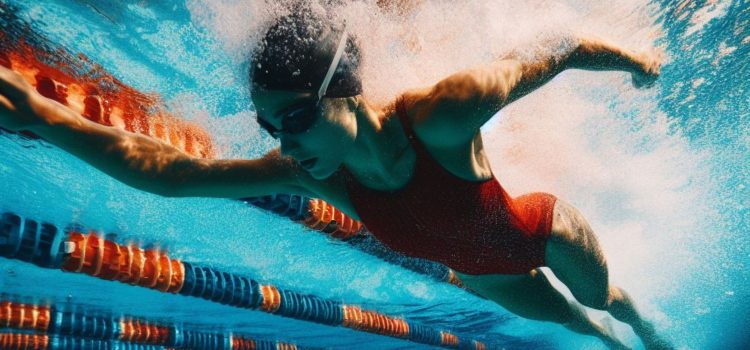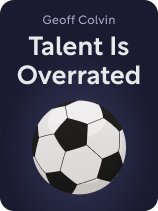

This article is an excerpt from the Shortform book guide to "Talent Is Overrated" by Geoff Colvin. Shortform has the world's best summaries and analyses of books you should be reading.
Like this article? Sign up for a free trial here.
What is deliberate practice, and how can you use it to get better at something? What can this style of practicing do for your performance?
Deliberate practice is a method of identifying your weaknesses and specifically targeting them, instead of generally practicing an entire set of skills. This process focuses your energy on where you need improvement the most.
Continue reading to learn how deliberate practice works.
Understanding Deliberate Practice
What is deliberate practice? Deliberate practice involves continually identifying the weak points of your performance and working to improve them. As you strengthen each weak point, your overall performance improves.
Everyone deliberately practices when first learning a new activity. However, most people stop doing so once they can comfortably perform the activity. It’s easier to let instinct and muscle memory take over, so they stop actively correcting their weak points and their performance stops improving. In contrast, excellent performers continue deliberately practicing until their performance improves far above average.
Take swimming, for example. When you first learned how to swim, you consciously practiced it: You had to actively think about how the different strokes worked and whether you were moving your limbs correctly. Now that you’re comfortable swimming, though, you don’t think about it as much. You already know how to do the strokes, and you can largely rely on muscle memory to execute them. You’re not the fastest or the most graceful, but you can have fun in the pool, so you don’t worry about perfecting your technique. Thus, you remain a decent but unremarkable swimmer. Olympic swimmers, on the other hand, devote their lives to perfecting their technique. They constantly monitor and improve their every movement, and this focus lets them excel.
| Stigmatizing Failure Prevents Deliberate Practice In Black Box Thinking, Matthew Syed suggests that people in certain organizations or professions are more likely to stop claiming their mistakes (or identifying their weak spots) than others. Specifically, he says this is true for people in professions that require a high level of education, such as doctors and lawyers. Rather than letting instinct and muscle memory take over, these individuals stop claiming their mistakes because the organization they work for stigmatizes failure. People expect you to perform excellently in these professions. If you make a mistake, they’ll doubt your qualifications for your position, potentially putting your career at risk. Thus, you try to protect yourself by refusing to admit your mistakes. However, this means you can’t correct them or improve, hampering both your performance and the organization’s. Syed says that one method of fixing this problem is having systems for the organization to carefully investigate any mistakes people make. This ensures that the organization has all the information it needs to address mistakes in a fair and consistent way. In turn, this fairness inspires trust in the organization: You don’t have to worry about being disproportionately penalized for your mistakes, so you’re free to admit them and work to improve. |
How Deliberate Practice Improves Performance
If talent can’t explain excellent performance, how can deliberate practice do so? Deliberate practice improves your performance in a specific field by helping you understand how that field works as a whole. Instead of believing that your understanding and skill are dictated by an inherent talent, you build your understanding and skill by analyzing and tracking your performance. As you analyze your mistakes and experiment with methods of fixing them, you begin to recognize commonalities between your mistakes or successes. These commonalities reveal the overarching rules that govern your field. You can then follow these rules to avoid future mistakes and improve your performance, growing closer to excellence.
Continuing our example, let’s say you want to swim faster. You analyze your current method and realize that your feet are dragging through the water, slowing you down. After trying different positions, you learn that pointing your toes reduces drag and makes you faster. You repeat the same process with your hands, learning that flattening them is the best way to reduce drag. Comparing these successful methods reveals an overarching rule of swimming: The more streamlined your body, the faster you are. You apply this understanding to the rest of your body by keeping your arms and legs straighter, too. As a result, you become significantly faster.
(Shortform note: Can you build your understanding of a field through other methods, like reading books or attending lectures? In Peak, Anders Ericsson says no, as there’s a difference between having knowledge of a field and understanding a field. When you absorb information passively, instead of analyzing and experimenting with your own performance, you’re less likely to recognize the overarching connections between those pieces of information. In other words, you’ll have many separate pieces of knowledge about the field, but you won’t understand how they fit together to form a whole. Thus, you won’t be able to use your knowledge as effectively as someone who understands the field, and you’ll struggle more to achieve excellence.)

———End of Preview———
Like what you just read? Read the rest of the world's best book summary and analysis of Geoff Colvin's "Talent Is Overrated" at Shortform.
Here's what you'll find in our full Talent Is Overrated summary:
- How some people can perform at a globally impressive level while the average person can't
- Why you need to shift your mindset from talent to training
- How to use the two approaches to deliberate practice successfully






